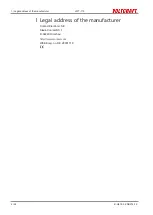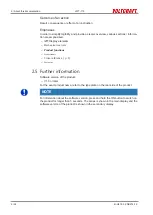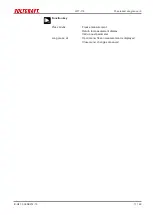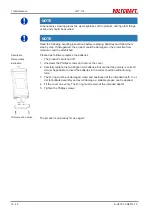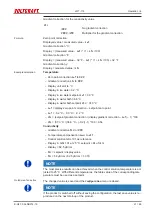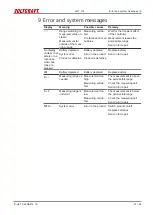
6 | Bases for measurement
LWT-110
12 / 26
B-H87.0.02.DB214-1.0
6 Bases for measurement
6.1 Conductivity principles
Conductivity γ
Conductivity describes the capability of a material to conduct electrical current. It is
also the inverse of specific resistance. The conductance is the inverse of the meas-
ured resistance R.
Formula
γ = l / (R*A)
l = length of the material
A = cross section
R = measured resistance
Unit [γ] = Siemens / metre = S / m
Normally, the values for liquids are specified in µS / cm or in mS / cm. With measure-
ments in purest water, the units kOhm * cm or MOhm * cm are commonly used.
6.2 Conductivity measurement
The conductivity measurement is a comparatively uncomplicated measurement. The
standard electrodes are stable for correct use for a long time and can be calibrated
over the gradient correction.
Range
1
2
3
0.000 to 2.000 µS/
cm
0.00 to 20.00 µS/cm 0.0 to 100.0 µS/cm
With the automatic range selection, the range with the best resolution is selected auto-
matically.
6.3 Measurement of specific resistance
The specific resistance is the inverse of the conductivity and is specified in the device
in MOhm*cam or kOhm*cm.
Range
1
2
3
10.0 to 200.0
kOhm*cm
0.010 to 2.000
MOhm*cm
0.01 to 20.00
MOhm*cm
With the automatic range selection, the range with the best resolution is selected auto-
matically.
6.4 Electrodes / measuring cell
6.4.1 Design and selection
There are basically two different types of measuring cells: 2-pole and 4-pole measur-
ing cells. Control and/or evaluation take place in a similar manner; the 4-pole measur-
ing cells can compensate well for polarisation effects and contamination to a certain
degree with the more elaborate measuring processes.
The product is equipped with a permanently connected 2-pole measuring cell.




